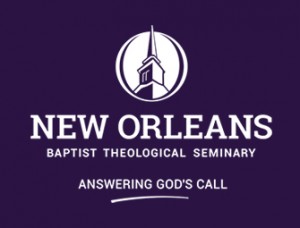By Don F. Mabry
ALEXANDRIA, La. (LBM)– The number of churches in our country constantly is changing and it is very difficult to acquire information from the various denominations, but estimates indicate that there are 330,000 Christian churches and congregations in the United States today.
But the question that arises about that number is how many more churches are needed to “church” our country?
One of the most interesting facts about the number of U.S. churches is that it has not changed much in the past 20 years or so because the number of new churches being planted and the number of established churches that are closing are nearly the same. Likewise, the number of denominations is constantly changing as new denominations come into existence. Plus, in recent years, one of the most prolific denominational changes has been the growth in non-denominational churches. Many of these fellowship and exchange information with other non-denominational congregations but their relationship with each other is informal.
Regardless, with the estimated U.S. population of 328 million people, we can calculate that there is a congregation for nearly every 994 or so people in our country.
But this average is misleading because there is such a disparity between urban centers, suburban regions, and rural areas regarding the distribution of congregations on a per person basis. For instance, almost any town in the U.S. with a population of 1,000 or so will have multiple churches, resulting in a ratio of 1 church for nearly every 100 people in town. There is no such penetration in larger suburban regions or mega urban centers.
When the Southern Baptist Convention was organized in 1845, it reported 4,126 cooperating churches. In the early 1870’s, records indicate there were nearly 8,000 churches, growing to 16,091 churches by 1890.
In other words, the SBC doubled the number of cooperating congregations twice in 45 years.
Then it took the SBC another 70 years to double again, reaching 32,251 churches in 1960; and earlier this year, the SBC Executive Committee announced that there were 47,530 cooperating churches in 2020, a 47% increase in 60 years.
During this last period of the Church in America (1960-present), those who identify themselves as Christian has declined from 90 percent (late 1970s) to fewer than 71 percent (2018). Moreover, a Gallup study shows that church membership dropped below 50 percent in 2020, a first since 1937 when Gallup began collecting such data.
Sadly, that decline correlates with data showing a decline in evangelistic effort among Southern Baptists, as well as an apparent shift in church planting strategies that transferred tremendous resources from traditional receptive areas of the country to resistant population centers – something that began in 1951 with the formal move from being just a “Southwide” fellowship of churches.
Chuck Kelley, former president of the New Orleans Baptist Theological Seminary, suggests the year 2000 was the turning point from plateau to decline in the SBC, offering that the number of churches continued to increase but that baptisms steadily declined – then attendance and giving dropped, too.
He also blamed such factors as changes in the national population as well as “carnalship” (pursuit of worldly experiences at the expense of spiritual progress) among “a growing number of Baptists.”
Furthermore, Kelley cited a shift in LifeWay to an emphasis of products that appeal to all evangelicals at the expense of its focus on Southern Baptists and pointed out the growing influence of Calvinism in the SBC. He also said a fundamental shift by the North American Mission Board from evangelism to church planting was causal — as well as disruptions in NAMB’s relationships with state conventions.
Importantly, Kelley stated the fact that Southern Baptists are losing the South, “territory (and people) long thought secure.”
He and I strongly agree on most points, but we see different origins in terms of dates.
Regardless, we both acknowledge that growth in church numbers, or attendance or giving, does not begin with a greater emphasis on church planting but on a return to Southern Baptists’ first love of leading others to Christ.
Here are couple of facts to note:
— If the SBC had maintained the 1845 ratio of churches to population (1:4,100) there would now be 82,000 churches cooperating with the SBC, or almost twice as many churches as are in the SBC now.
— Moreover, if the SBC had doubled the number of churches every 25 years, as it did from 1845 to 1890, there would now be more than 1,000,000 churches cooperating to share the Good News of Jesus (670,000 more churches than exist among all denominations, today).
But, looking at the reality of the state of Christianity in our nation today, the answer to the question, “How many churches will it take to ‘church’ America?” (at least with respect to Southern Baptists) is “47,530” churches – if they commit to share the Gospel with a lost country.
Don F. Mabry is a retired Louisiana Baptist missions and ministries director.




